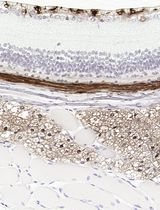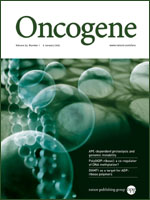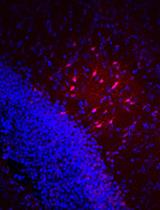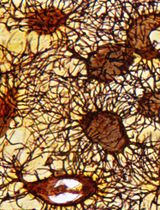- EN - English
- CN - 中文
Senescence Associated β-galactosidase Staining
衰老相关β半乳糖苷酶的染色
发布: 2012年08月20日第2卷第16期 DOI: 10.21769/BioProtoc.247 浏览次数: 73764

相关实验方案

采用 Davidson 固定液和黑色素漂白法优化小鼠眼组织切片的免疫组化染色
Anne Nathalie Longakit [...] Catherine D. Van Raamsdonk
2025年11月20日 1474 阅读
Abstract
Detection of senescent cells using a cytochemical assay was first described in 1995 (Dimri et al., 1995). The identification of senescent cells is based on an increased level of lysosomal β-galactosidase activity (Kurz et al., 2000). Cells under normal growth condition produce acid lysosomal β- galactosidase, which is localized in the lysosome. The enzymatic activity can be detected at the optimal pH 4.0, using the chromogenic substrate 5-bromo-4-chloro-3-indolyl β D-galactopyranoside (X-gal) (Miller, 1972). In comparison, upon senescence, the lysosomal mass is increased, leading to production of a higher level of β-galactosidase, termed senescence-associated β-galactosidase (SA-β-gal) (Kurz et al., 2000). The abundant senescence-associated enzyme is detectable over background despite the less favorable pH conditions (pH 6.0) (Dimri et al., 1995). The SA-β gal positive cells stain blue-green, which can be scored under bright-field microscopy. In this assay it is best to avoid over-confluency of the cells, or cells that have undergone too many passages, as these conditions can cause false positive results.
Keywords: Senescence (衰老)Materials and Reagents
- Paraformaldehyde (PFA) (Sigma-Aldrich)
- 5-bromo-4-chloro-3-indolyl β D-galactopyranoside (X-gal) (Sigma-Aldrich)
- Potassium ferrocyanide (Sigma-Aldrich, catalog number: B4252 )
- Potassium ferricyanide (Sigma-Aldrich, catalog number: P9387 )
- Phosphate buffered saline (PBS)
- Sodium hydroxide
- Dimethylformamide
- Sodium chloride
- Magnesium chloride
- Dibasic sodium phosphate
- Citric acid
- Sodium phosphate
- 4% paraformaldehyde (PFA) (see Recipes)
- Senescence associated β-galactosidase (SA-β-gal) staining solution (see Recipes)
Equipment
- Inverted microscope [e.g. Olympus 1 x 71 inverted microscope (Olympus)]
- 24-well plate
- p1000 pipette
- 37 °C incubator
- Hot plate
Procedure
文章信息
版权信息
© 2012 The Authors; exclusive licensee Bio-protocol LLC.
如何引用
Eccles, M. and Li, C. G. (2012). Senescence Associated β-galactosidase Staining. Bio-protocol 2(16): e247. DOI: 10.21769/BioProtoc.247.
分类
癌症生物学 > 细胞死亡 > 细胞生物学试验 > 细胞周期
细胞生物学 > 细胞活力 > 细胞死亡
细胞生物学 > 细胞染色 > 全细胞
您对这篇实验方法有问题吗?
在此处发布您的问题,我们将邀请本文作者来回答。同时,我们会将您的问题发布到Bio-protocol Exchange,以便寻求社区成员的帮助。
Share
Bluesky
X
Copy link











